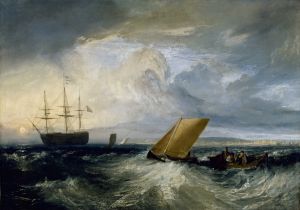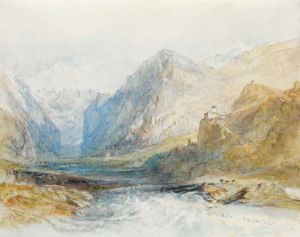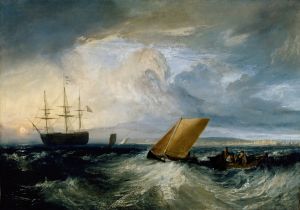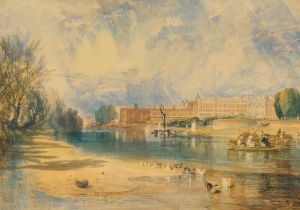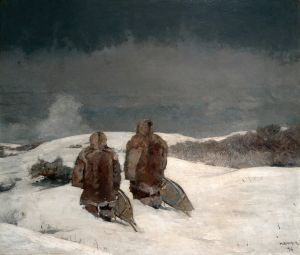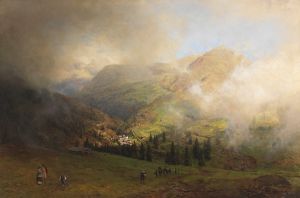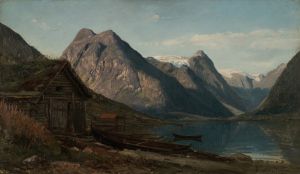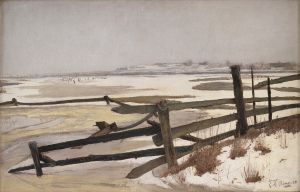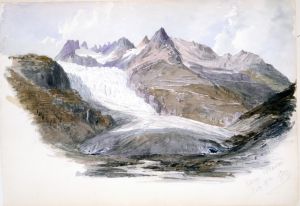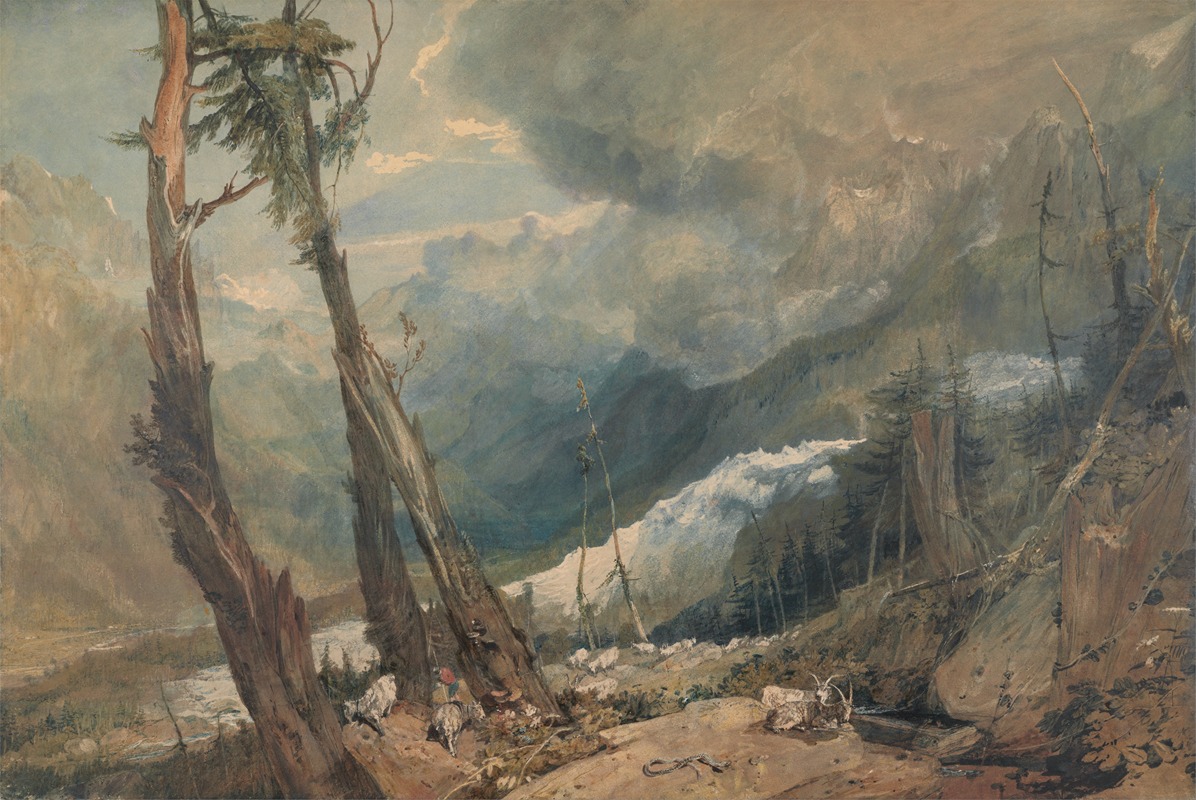
Mer de Glace, in the Valley of Chamouni, Switzerland
A hand-painted replica of Joseph Mallord William Turner’s masterpiece Mer de Glace, in the Valley of Chamouni, Switzerland, meticulously crafted by professional artists to capture the true essence of the original. Each piece is created with museum-quality canvas and rare mineral pigments, carefully painted by experienced artists with delicate brushstrokes and rich, layered colors to perfectly recreate the texture of the original artwork. Unlike machine-printed reproductions, this hand-painted version brings the painting to life, infused with the artist’s emotions and skill in every stroke. Whether for personal collection or home decoration, it instantly elevates the artistic atmosphere of any space.
Joseph Mallord William Turner, one of the most renowned British landscape painters, created the artwork "Mer de Glace, in the Valley of Chamouni, Switzerland" in 1803. This painting is a significant example of Turner's early work, showcasing his fascination with the sublime and the dramatic landscapes of nature. Turner was known for his innovative use of light and color, and this painting is no exception, capturing the awe-inspiring beauty of the Mer de Glace, a large glacier located in the French Alps near Chamonix.
The Mer de Glace, or "Sea of Ice," is the largest glacier in France and was a popular destination for tourists and artists in the 19th century. Turner's depiction of this natural wonder reflects the Romantic era's interest in the power and majesty of nature. The painting illustrates Turner's skill in rendering the intricate details of the glacier and the surrounding mountainous landscape, emphasizing the vastness and the dynamic forms of the ice.
Turner's journey to the Alps in 1802 was part of a grand tour that many artists of the time undertook to study the natural world and the works of the Old Masters. This trip was particularly influential for Turner, as it exposed him to the dramatic landscapes that would become a central theme in his work. The experience of witnessing the Alps' grandeur firsthand had a profound impact on Turner, inspiring him to explore themes of nature's power and beauty in his art.
In "Mer de Glace, in the Valley of Chamouni, Switzerland," Turner employs a palette of cool blues and whites to convey the icy expanse of the glacier, contrasted with the darker tones of the surrounding mountains. The composition is carefully structured to lead the viewer's eye through the scene, capturing the sense of movement and the play of light on the ice. Turner's technique of layering washes of watercolor creates a luminous effect, enhancing the painting's atmospheric quality.
This work is also notable for its contribution to the development of landscape painting as a respected genre in its own right. During Turner's time, landscapes were often considered less important than historical or religious subjects. However, Turner's innovative approach and his ability to convey the emotional impact of natural scenes helped elevate the status of landscape painting.
"Mer de Glace, in the Valley of Chamouni, Switzerland" is housed in the Tate collection in London, where it continues to be admired for its artistic and historical significance. The painting not only exemplifies Turner's mastery of watercolor but also serves as a testament to his enduring influence on the Romantic movement and the landscape genre. Through works like this, Turner paved the way for future generations of artists to explore the relationship between humanity and the natural world, capturing the sublime beauty and power of nature in their art.






